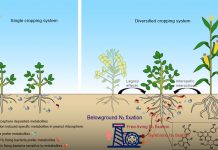Xu JS Zhao BZ Chu WY Mao JD Zhang JB. Chemical nature of humic substances in two typical Chinese soils (upland vs paddy soil): A comparative advanced solid state NMR study. Science of The Total Environment 2017 576: 444-452
Abstract
Knowledge of the structural features of humic substances (HSs) is essential for elucidating the mechanisms of humification in different soil environments and realizing their profound roles in environmental issues. The aim of this work was to investigate the chemical structures of fulvic acid (FA) humic acid (HA) and humin (HM) fractions isolated from an upland soil (Fluvisol) and a paddy soil (Anthrosol) typical in China using advanced solid-state 13C nuclear magnetic resonance (NMR) techniques. The results revealed that there were great structural differences of HSs between the two soils. The two FAs showed distinct quantitative differences in aliphatics with more polysaccharides in the FA from the upland soil than from the paddy soil. The HM from the upland soil differed from the paddy soil HM in having more proteins-peptides (23% vs 20%) total aromatics (21% vs 12%) as well as fewer lipids (24% vs 35%) and polysaccharides (27% vs 31%). The HM fractions represented the most different components of organic matter between the two soils. The degree of difference between the two HAs fell in between that of FAs and HM fractions. In particular the HA from the upland soil had relatively greater degree of aromaticity. Our study indicated that the upland soil exhibited a higher degree of humification compared with the paddy soil. Among the three humic fractions the FAs featured COO-N-C







